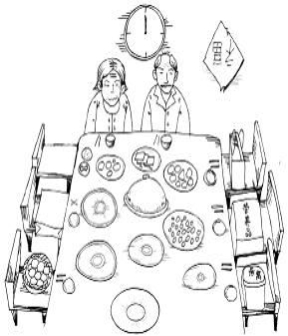题目内容
What is funny? The short answer is: Who knows? The joke that causes a burst of laughter from one listener might be met with a puzzled look from another.
In general, you should avoid jokes at any business or social gathering where there are more than two people in your conversational group. If there are only two people — and they consist of you and your best friend — go ahead and tell it.
Admittedly, a few people possess a perfect sense of timing, appropriateness, and joke delivery. You are probably not one of them. You might be quite funny and have many great jokes. But there’s a place for jokes — over dinner with family, hiking with friends, but business or social affairs with colleagues and acquaintances (熟人) are not it. It takes a whole other level of joke-telling ability to put a joke into the more formal conversations.
The best jokes come into the conversation so that by the time listeners realize a joke is in progress, the punchline that produces humour is being delivered — to their surprise and delight.
Jokes don’t translate well when you’re in a group with mixed backgrounds: those whose first language is not English, those who might not understand a special term or an “in” expression, young people who wouldn’t catch a reference to some bit of culture familiar to older people — and vice versa (反之亦然).
Never joke about another person in the group — about their name, habits, hometown, profession, appearance, or past. It’s not a question of whether the joke is cheery or appropriate. No one enjoys being singled out this way. When you are the subject of the joke, the laughter doesn’t feel good no matter how hard you try to tell yourself they’re not laughing at you. Because that’s what it feels like.
What do you say if you realize your joke upset someone? Apologize as briefly and as sincerely as you can, and hope that someone changes the subject. Try saying: “I’m sorry. I should have known better” or “I’m sorry. I wasn’t thinking.”
What do you do if people don’t get your joke or don’t appear to find it as funny as you do? First, do not retell it, only louder this time, hoping the point of the joke will be seen. Second, don’t try to push people to get it. People do not like people whose jokes they don’t understand. They feel stupid and need to blame someone. If you want to leave with the goodwill of your listeners, say something to make them feel less foolish. You could say: “I don’t know why I tell jokes when I’m so poor at it.”
The world needs laughter, and good humour is a success wherever it goes, so this caveat (告诫) about joke-telling is not meant to dampen high spirits or to advocate dull conversation. If you’re a gifted story-teller and you know people love your jokes, go for it. We need your kind. The rest of us will save our jokes for family and close friends.
1.According to the passage, it might be appropriate for you to tell a joke at a business or social gathering if ______.
A. the joke is well chosen
B. you have complete confidence in your listeners’ sense of humor
C. only you and your best friend are involved in the conversation
D. the audience consists of your colleagues and acquaintances
2.Why do some jokes fail to work?
A. Because the punchline is too long to catch.
B. Because the joke-teller uses wrong words and expressions.
C. Because the joke-teller and listeners don’t share the same background knowledge.
D. Because the jokes are not properly translated into the listeners’ native language.
3.How will people feel when they are joked about?
A. They will feel happy if the joke is a pleasant one.
B. They will be upset no matter what kind of joke it is.
C. They will enjoy the joke when realizing that people are not laughing at them.
D. They will panic because it makes them the center of attention.
4.When people do not understand a joke they hear, they tend to ______.
A. believe it’s the joke-teller’s fault B. get someone to retell the joke
C. ask for explanation D. say something foolish
5.Which of the following best describes the writer’s opinion on joke-telling?
A. Nobody knows what makes a joke funny.
B. We should not tell jokes unless we are asked to do so.
C. Joke-telling is a very complex thing.
D. Jokes should be told only to friends and family members.


